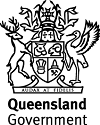Published Monday, 19 January, 2009 at 09:52 AM

Minister for Primary Industries and Fisheries
The Honourable Tim Mulherin
34 sharks caught on Gold Coast beaches
A total of 34 sharks were caught in shark control equipment on the Gold Coast in 2008 – the same number as caught in 2007.
The largest of those caught was a 2.9 metre great white shark which was captured at Tugun beach in August 2008.
Primary Industries and Fisheries Minister Tim Mulherin said: “The majority of animals caught on the Gold Coast were tiger sharks and whaler species including bull sharks.
“There is currently a healthy population of bull sharks in Gold Coast canals due to the drier conditions over the past 18 months.
“With the dry conditions fish and other food sources are not flushed out to sea as frequently which means the bull sharks remain in the canal area for longer rather than moving off-shore with the food source.
“The recent summer rainfall will mean the sharks will become more active in the murky waters as food sources move around.
“I’m encouraging people to take simple precautions such as avoiding swimming in river mouths, canals, and artificial lakes.”
There are 11 shark nets and 35 drumlines on the Gold Coast.
“Sharks strike fear in most people, but in reality the chances of being bitten by a shark are low,” Mr Mulherin said.
“Far more people are killed each year by lightning than sharks.
“In Queensland, the shark control program offers swimmers additional safety.
“While the program does not offer an impenetrable barrier between bathers and sharks, the shark control equipment is in place to remove large sharks from popular bathing areas.
“Sharks are a natural part of the marine environment and when we enter the water we are entering their domain.
“Beaches protected by shark control equipment and lifesaving services are certainly a safer option if going for a swim,” Mr Mulherin said.
DPI&F is emphasising the rules about sharks and safe swimming practices which include:
• Swim or surf only at patrolled beaches and between the flags
• Obey lifesavers’ and lifeguards’ advice, and heed all sign and safety warnings
• Leave the water immediately if a shark is sighted
• Do not swim or surf after dusk, at night or before dawn when sharks are most active
• Do not swim or surf in murky waters
• Do not swim in or near mouths of estuaries, artificial canals and lakes
• Never swim alone
• Never swim when bleeding
• Do not swim near schools of fish or where fish are being cleaned
• Do not swim near or interfere with shark control equipment
• Do not swim with animals.
For more information about the Shark Control Program visit the DPI&F website at www.dpi.qld.gov.au/fishweb
Media: Mark Symons 32396530
The largest of those caught was a 2.9 metre great white shark which was captured at Tugun beach in August 2008.
Primary Industries and Fisheries Minister Tim Mulherin said: “The majority of animals caught on the Gold Coast were tiger sharks and whaler species including bull sharks.
“There is currently a healthy population of bull sharks in Gold Coast canals due to the drier conditions over the past 18 months.
“With the dry conditions fish and other food sources are not flushed out to sea as frequently which means the bull sharks remain in the canal area for longer rather than moving off-shore with the food source.
“The recent summer rainfall will mean the sharks will become more active in the murky waters as food sources move around.
“I’m encouraging people to take simple precautions such as avoiding swimming in river mouths, canals, and artificial lakes.”
There are 11 shark nets and 35 drumlines on the Gold Coast.
“Sharks strike fear in most people, but in reality the chances of being bitten by a shark are low,” Mr Mulherin said.
“Far more people are killed each year by lightning than sharks.
“In Queensland, the shark control program offers swimmers additional safety.
“While the program does not offer an impenetrable barrier between bathers and sharks, the shark control equipment is in place to remove large sharks from popular bathing areas.
“Sharks are a natural part of the marine environment and when we enter the water we are entering their domain.
“Beaches protected by shark control equipment and lifesaving services are certainly a safer option if going for a swim,” Mr Mulherin said.
DPI&F is emphasising the rules about sharks and safe swimming practices which include:
• Swim or surf only at patrolled beaches and between the flags
• Obey lifesavers’ and lifeguards’ advice, and heed all sign and safety warnings
• Leave the water immediately if a shark is sighted
• Do not swim or surf after dusk, at night or before dawn when sharks are most active
• Do not swim or surf in murky waters
• Do not swim in or near mouths of estuaries, artificial canals and lakes
• Never swim alone
• Never swim when bleeding
• Do not swim near schools of fish or where fish are being cleaned
• Do not swim near or interfere with shark control equipment
• Do not swim with animals.
For more information about the Shark Control Program visit the DPI&F website at www.dpi.qld.gov.au/fishweb
Media: Mark Symons 32396530

